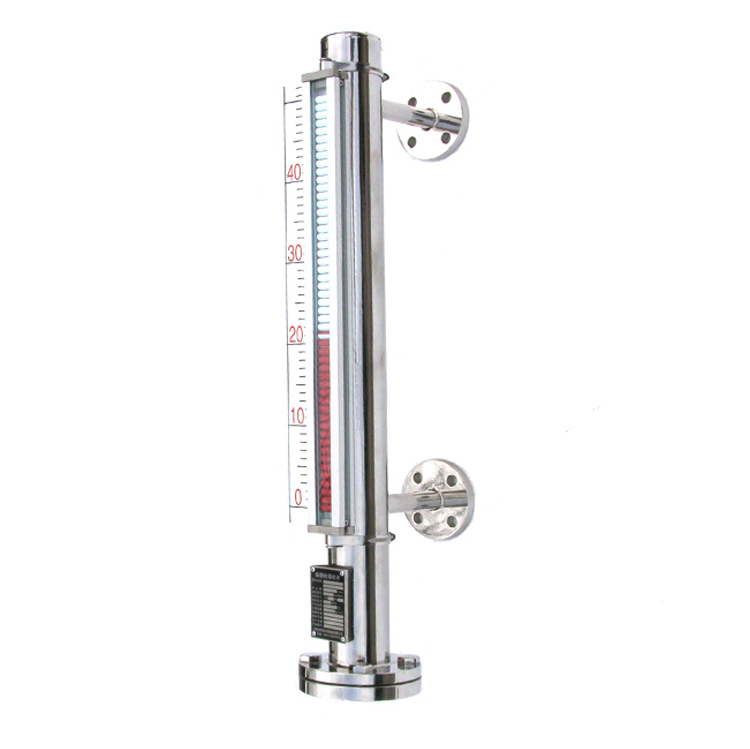The performance of the magnetic flap level gauge is affected by many factors, which are related to various aspects of the instrument and the type of application. However, it can be said that the three most relevant aspects include hysteresis, linearity and repeatability, the first of which is the main factor leading to inaccurate readings.
Although most manufacturers of magnetic flap level gauges combine these three parts by including them in a single value (representing the total accuracy of the level gauge), the linearity of the Viatran magnetic flap level gauge The value is specified separately from the second value (representing the contribution of hysteresis and repeatability, respectively), accuracy. Linearity The accurate graphical representation of the electrical output of the level gauge should form a straight line graph covering the pressure range from zero to full scale. However, in fact, this situation is rare. In most cases, the input range will have a small deviation. This is due to many factors, including the type of technology used in the sensor, the geometry of the diaphragm used in the level gauge, and basic defects in the material that makes up the sensor.

The nature of linearity is defined as the degree to which the actual output curve of the level gauge is similar to the expected linear graph, and is quantified as the maximum deviation between the curve and the straight reference line. There are many ways to quantify linearity. The first is terminal line technology. The terminal line is the terminal line that connects the value of the transmitter’s zero output signal to the full-scale output signal, as shown in the figure. Linearity is the maximum deviation between the transmitter output line and the terminal line, and is expressed as a percentage of the transmitter’s full-scale range. The second technique is the best fit straight line (BFSL) method. Now, it has been widely used in the field of magnetic flap level gauges, and uses a mathematical linear regression model to fit a straight line to various output data points of a given level gauge. Points that fall above and below the BFSL are weighted, so linearity in this paradigm is defined as the maximum deviation of the transmitter output curve from the BFSL.
When comparing the two, as shown in the figure, the BFSL technology clearly provides a linear value twice as high as the linear value obtained using the terminal line method. However, this is because the former method passes a line between the two closest parallel lines, and at the same time uses a calibration curve to close all outputs and measured values. On the other hand, the terminal line technology uses a line to connect two points at the extremes of the transmitter’s output signal. Viatran has adopted BFSL technology as its standard in the production line of magnetic flap level gauges, because it has been widely used in this field, and provides a fair comparison between Viatran units and other magnetic flap level gauges. The competitive environment.
In addition to selecting the best materials and technologies for each application and pressure range, Viatran engineers also use uniquely designed diaphragm geometry and linear compensation analog correction technology to compensate for non-linearity and improve sensor performance. Hysteresis Phenomenon Hysteresis error is the error caused by the change in the output of the level gauge when the same specific pressure is applied. This change depends on whether the pressure increases or decreases to reach the preset point. In some cases, a level gauge with a significant hysteresis error provides a higher reading when the pressure is increased from 0 PSI to 50 PSI compared to a pressure reduced from 100 PSI to 50 PSI, as shown in the figure below. The difference between these two signal outputs is the hysteresis error. The hysteresis error displayed by the Viatran pressure sensing unit is the percentage of the full-scale pressure. Repeatability The repeatability nature refers to the ability of the magnetic flap level gauge to provide the same output when the same pressure input is provided in different rounds.
If the magnetic flap level gauge is repeatable under zero pressure, it means that after two independent full-scale applications, the output under zero pressure is measured and found to be the same twice. However, due to mechanical or electrical changes, there may be small differences, which is called zero repeatability error.
Repeatability error can be quantified by looking at the change between the output of two independent but equal pressure applications, the value of which is given as a percentage of full-scale pressure.
Both repeatability and hysteresis error can measure the output signal change of a single pressure input. Therefore, the Viatran device uses “hysteresis and repeatability” as the unit to describe these two values in the product catalog. These two values are significantly affected by the mechanical and material properties of the diaphragm and sensor. Therefore, the Viatran magnetic flap level gauge is designed with carefully selected diaphragm and sensor materials. Due to these two characteristics, it can provide maximum durability and minimum error space.
Post time: 21-12-21
